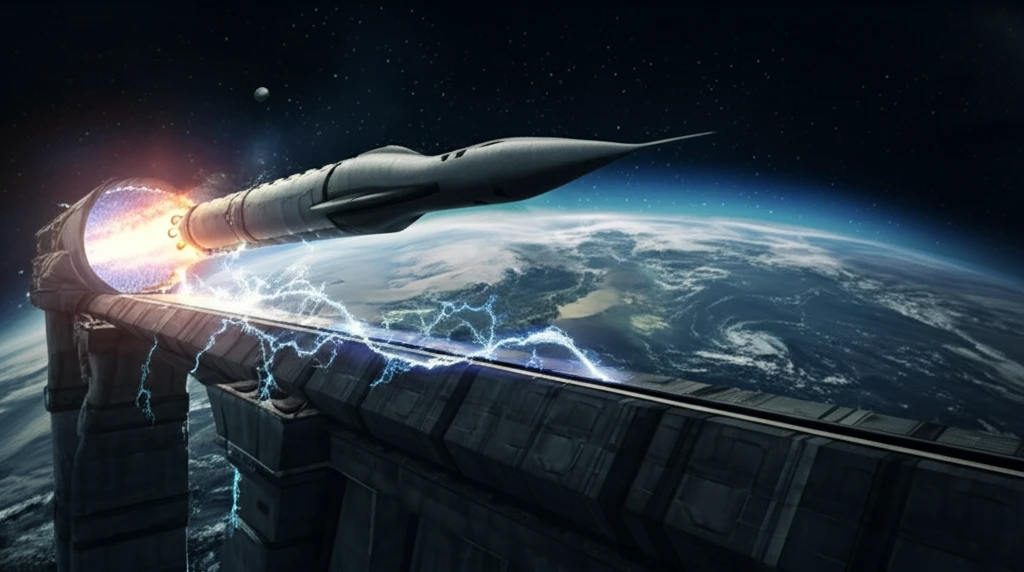
SSTO Rockets: How Electromagnetic Launch Could Revolutionize Space Travel
"Explore the feasibility of single-stage-to-orbit rockets boosted by electromagnetic launch systems and the innovative tech that's reshaping space access."
For decades, the dream of affordable and reliable space travel has driven innovation in launch vehicle technology. Single-stage-to-orbit (SSTO) rockets, which promise full reusability without the complexity of multi-stage systems, have long been a focus of this ambition. However, achieving SSTO with purely chemical propulsion faces significant hurdles, particularly in maximizing payload capacity while maintaining a high mass ratio.
Enter electromagnetic launch (EML) systems, a groundbreaking technology that offers a potential solution. By providing an initial, non-chemical boost to SSTO rockets, EMLs can significantly reduce the reliance on onboard propellant, thereby increasing payload capabilities and lowering launch costs. This innovative approach combines the strengths of traditional rocket propulsion with the efficiency of electromagnetic acceleration, potentially revolutionizing access to space.
This article delves into the feasibility of SSTO rockets augmented by EML systems, examining the historical context, technical challenges, and economic implications of this exciting concept. Drawing upon research and simulations, we'll explore how EML technology could reshape the future of space transportation, making it more accessible and sustainable.
The Promise of Electromagnetic Launch

Electromagnetic Launch (EML) systems use electromagnetic forces to accelerate projectiles to high speeds. Unlike chemical rockets that rely on propellant combustion, EMLs offer several key advantages. They can achieve higher initial velocities, reduce chemical fuel consumption, and potentially lower launch costs. The technology encompasses various approaches, including electromagnetic railguns, aircraft launch systems, and thrust launchers, each with its own characteristics and capabilities.
- Increased Payload Capacity: EMLs reduce the need for large propellant reserves, freeing up space for more payload.
- Reduced Launch Costs: Lower propellant consumption and simpler rocket designs can lead to significant cost savings.
- Improved Reliability: EMLs offer a more controlled and predictable launch environment compared to traditional chemical rockets.
- Greater Efficiency: Electromagnetic acceleration is potentially more energy-efficient than chemical combustion.
Future of Space Launch
Electromagnetic launch systems offer a compelling pathway to more affordable, efficient, and reliable space access. By addressing the limitations of traditional chemical propulsion, EML technology has the potential to revolutionize SSTO rockets and unlock new possibilities for space exploration and commerce. As research and development continue, the integration of EML with SSTO vehicles could usher in a new era of space travel, making it more accessible and sustainable for future generations.
